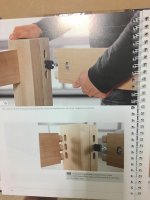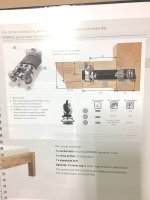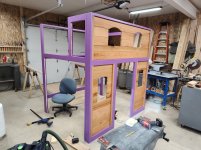I think the concern was about her being seen close to where the steel wire was in tension as the joint was being pulled. The wire and the hook could fly towards your child as the joint broke free.bpbolde said:I appreciate your concern for safety and it is something we take very seriously. While in the shop, she is supervised, always wears closed toe shoes, long pants, and eye/ear protection. I've owned a tree service for 22 years and we have a perfect safety record there too. Immediately after this, I talked to her about the hazard of getting too close.
About racking, I've built a workbench for a neighbor, and he has had no complaints about anything after a year of use. Let me dig up some photos about the construction.
Edit: Photo added
[attachimg=1]








